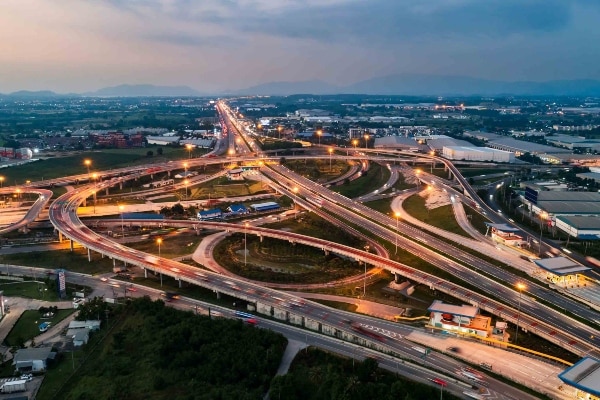-
Featured services
2026 Global AI Report: A Playbook for AI Leaders
Why AI strategy is your business strategy: The acceleration toward an AI-native state. Explore executive insights from AI leaders.
Access the playbook -
Services
Alle Services und Produkte anzeigenNutzen Sie unsere Fähigkeiten, um die Transformation Ihres Unternehmens zu beschleunigen.
-
Services
Network-Services
Beliebte Produkte
-
Services
Cloud
Beliebte Produkte
-
Services
Consulting
-
Edge as a Service
-
Services
Data und Artificial Intelligence
- KI und intelligente Lösungen
- Daten-/KI-Strategie und -Programm
- Data Engineering und Plattformen
- Daten-Governance und -management
- Datenvisualisierung und Entscheidungsfindung
- $name
- GenAI Platforms
- GenAI Industry Services
- GenAI Infrastructure Services
- GenAI Value Transformation
- Data und Artificial Intelligence
-
-
Services
Global Data Centers
-
Beliebte Produkte
-
Services
Application Services
-
Services
Sustainability Services
-
Services
Digital Workplace
-
Services
Business Process Services
-
Services
Generative AI
-
Services
Cybersecurity
-
Services
Enterprise Application Platforms
![]()
IDC MarketScape: Anbieterbewertung für Rechenzentrumsservices weltweit 2023
Wir glauben, dass Marktführer zu sein eine weitere Bestätigung unseres umfassenden Angebotes im Bereich Rechenzentren ist.
Holen Sie sich den IDC MarketScape -
-
Erkenntnisse
Einblicke und RessourcenErfahren Sie, wie die Technologie Unternehmen, die Industrie und die Gesellschaft prägt.
-
Erkenntnisse
Ausgewählte Einblicke
-
Die Zukunft des Networking
-
Using the cloud to cut costs needs the right approach
When organizations focus on transformation, a move to the cloud can deliver cost savings – but they often need expert advice to help them along their journey
-
So funktioniert Zero-Trust-Sicherheit für Ihr Unternehmen
Sorgen Sie dafür, dass Zero-Trust-Sicherheit für Ihr Unternehmen in hybriden Arbeitsumgebungen funktioniert.
-
-
Erkenntnisse
![]()
Copilot für Microsoft 365
Jeder kann mit einem leistungsstarken KI-Tool für die tägliche Arbeit intelligenter arbeiten.
Copilot noch heute entdecken -
-
Lösungen
Alle LösungenWir helfen Ihnen dabei, den Anforderungen an kontinuierliche Innovation und Transformation gerecht zu werden
Global Employee Experience Trends Report
Excel in EX mit Forschung basierend auf Interviews mit über 1.400 Entscheidungsträger:innen auf der ganzen Welt.
Besorgen Sie sich den EX-Report -
Erfahren Sie, wie wir Ihre Geschäftstransformation beschleunigen können
-
Über uns
Neueste Kundenberichte
-
Liantis
Im Laufe der Zeit hatte Liantis, ein etabliertes HR-Unternehmen in Belgien, Dateninseln und isolierte Lösungen als Teil seines Legacysystems aufgebaut.
-
Randstad
We ensured that Randstad’s migration to Genesys Cloud CX had no impact on availability, ensuring an exceptional user experience for clients and talent.
-
-
![Heineken Landing Page]()
NTT DATA und HEINEKEN
HEINEKEN revolutioniert die Mitarbeitererfahrung und die Zusammenarbeit mit einem hybriden Arbeitsplatzmodell.
Lesen Sie die Geschichte von HEINEKEN -
- Karriere
Topics in this article
A few years ago, “lift and shift” was the golden ticket to the cloud. It seemed simple: Pick up your workloads, move them from your on-premises data center into the cloud, and you’re done.
For a while, it even worked. Organizations were under pressure to cut costs and scale fast while striving to appear innovative, and lift and shift delivered quick wins — faster migrations, little need for rework, and that satisfying moment when the CIO could declare, “We’re in the cloud.”
But what used to be “good enough” is now holding organizations back.
How a quick fix becomes a long-term problem
Take a mid-sized insurer as an example. They decide to lift and shift their systems wholesale into the cloud. Thousands of workloads are moved overnight, with no rearchitecting or refactoring — just a quick change of address.
In the short term, it seems like progress. But within months, the cracks start to show:
- Costs are ballooning. What used to be fixed server costs have become unpredictable monthly bills. Without optimization or right-sizing, 24x7 workloads keep the meter running around the clock.
- Performance is lagging. Legacy applications are still monolithic and hard to scale. They haven’t magically become agile just because of the change in environment.
- Teams are struggling. Managing cloud operations requires new skills, different tools and new ways of thinking to avoid outages, misconfigurations and security gaps.
- Innovation is stalling. By simply moving workloads “as is,” the insurer has missed out on everything that makes the cloud transformative, including AI and automation.
Lift and shift might move your business forward temporarily, but it won’t modernize it — a crucial distinction explored in a new NTT DATA perspective, Cloud transformation in the age of AI: The evolution of lift and shift.
The world changed, and so did cloud expectations
When lift and shift first became popular, the cloud was mostly about efficiency. The goal was to save money and free up space. But today, it’s about capability — using cloud-native services, AI and automation to unlock new business models and faster innovation.
At the same time, the landscape has shifted dramatically. For instance, Broadcom’s 2023 acquisition of VMware changed licensing structures for many enterprises, making the cost of “standing still” painfully high. Organizations now face a clear choice: Adopt more of the bundled software to access greater value, modernize their infrastructure or pursue both paths in tandem.
Furthermore, data centers are in many cases seen as expensive real estate rather than assets. And with AI becoming integral to competitiveness, organizations can’t afford to be weighed down by outdated infrastructure.
The message is clear: The cloud is the new launchpad for transformation.
From migration to transformation
So, what does this mean in practice?
Many organizations are working with expert service providers who can guide them on their journey to the cloud with best practices and tools like cloud transformation factories, where the focus isn’t just on moving workloads faster but also on modernizing them along the way.
A cloud transformation factory blends automation, AI and deep expertise across every stage to help you decide what to keep, what to upgrade and what to rebuild.
At NTT DATA, we partner with Amazon Web Services (AWS) to use tools such as AWS Application Discovery Service, Amazon Macie and AWS Compute Optimizer to make the process smarter and more efficient.
Our AI-driven mapping and dependency analysis reveal exactly where value lies. FinOps guardrails ensure your CFO has clear visibility of the before-and-after economics, and modernization tools like AWS Transform refactor your legacy code for the cloud era.
This helps you avoid pitfalls like cost overruns, a lack of skills, misconfigured cloud services, poor tracking and usage monitoring, and inadequate optimization or “right-sizing” of workloads.
Why this matters now
Cloud transformation is a business strategy. If you stop at migration, you risk paying more for systems that deliver less. But if you modernize, you gain speed, scalability and a foundation for innovation.
Don’t get left behind — the future belongs to those who transform smartly.




